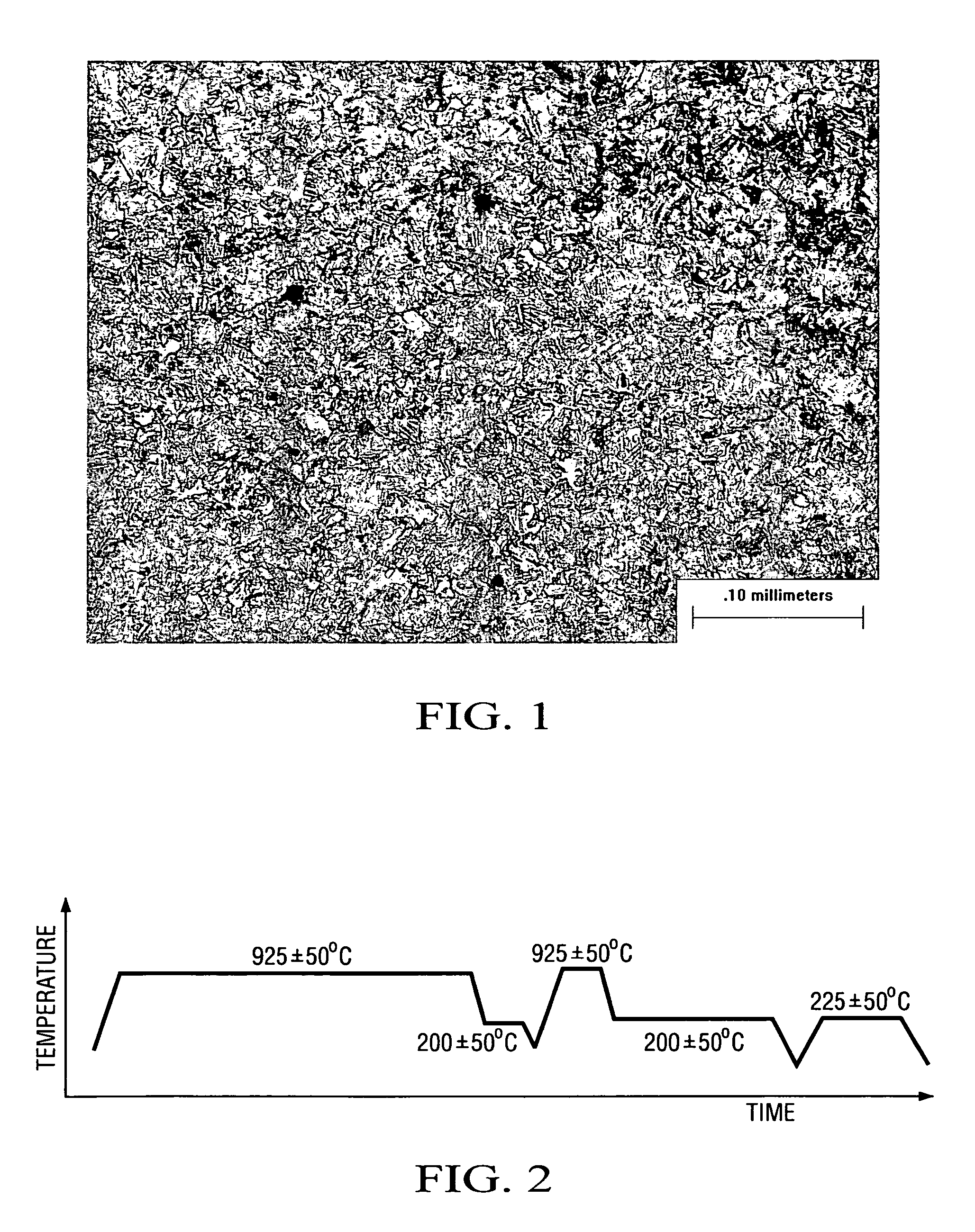Torque transferring low carbon steel shafts with refined grain size
a low carbon steel and grain size technology, applied in the direction of furnaces, heat treatment equipment, manufacturing tools, etc., can solve the problems of inability to further alter physical properties, inability to further use mechanical operations such as forging, rolling, etc., and the stress imparted to such shafts is rarely constant, so as to improve fatigue resistance
- Summary
- Abstract
- Description
- Claims
- Application Information
AI Technical Summary
Benefits of technology
Problems solved by technology
Method used
Image
Examples
Embodiment Construction
[0013]The present invention is directed to a dual carboaustempering of torque transmission shafts of low alloy carbon steels or plain-carbon steels. Both of the latter types of steel are well known to the skilled artisan. Plain-carbon steel generally contains no other major alloying element other than carbon, and may be exemplified by SAE / AISI 10xx series steels. Low alloy steels have only minor amounts of alloying elements, and by the ISO definition, contain between 1% and 5% of elements deliberately added for the purpose of modifying properties. Non-limiting examples of low alloy steels include SAE / AISI 41xx, 43xx, 51xx, and 86xx series steels. Thus, the steels suitable for use in the present invention are carbon steels containing less than about 5 weight percent of purposefully added alloying ingredients. Typical alloying ingredients used in these minor amounts include, but are not limited to, silicon, vanadium, chromium, manganese, nickel, titanium, cobalt, and the like.
[0014]To...
PUM
| Property | Measurement | Unit |
|---|---|---|
| temperature | aaaaa | aaaaa |
| temperature | aaaaa | aaaaa |
| weight percent | aaaaa | aaaaa |
Abstract
Description
Claims
Application Information
 Login to View More
Login to View More - R&D
- Intellectual Property
- Life Sciences
- Materials
- Tech Scout
- Unparalleled Data Quality
- Higher Quality Content
- 60% Fewer Hallucinations
Browse by: Latest US Patents, China's latest patents, Technical Efficacy Thesaurus, Application Domain, Technology Topic, Popular Technical Reports.
© 2025 PatSnap. All rights reserved.Legal|Privacy policy|Modern Slavery Act Transparency Statement|Sitemap|About US| Contact US: help@patsnap.com


